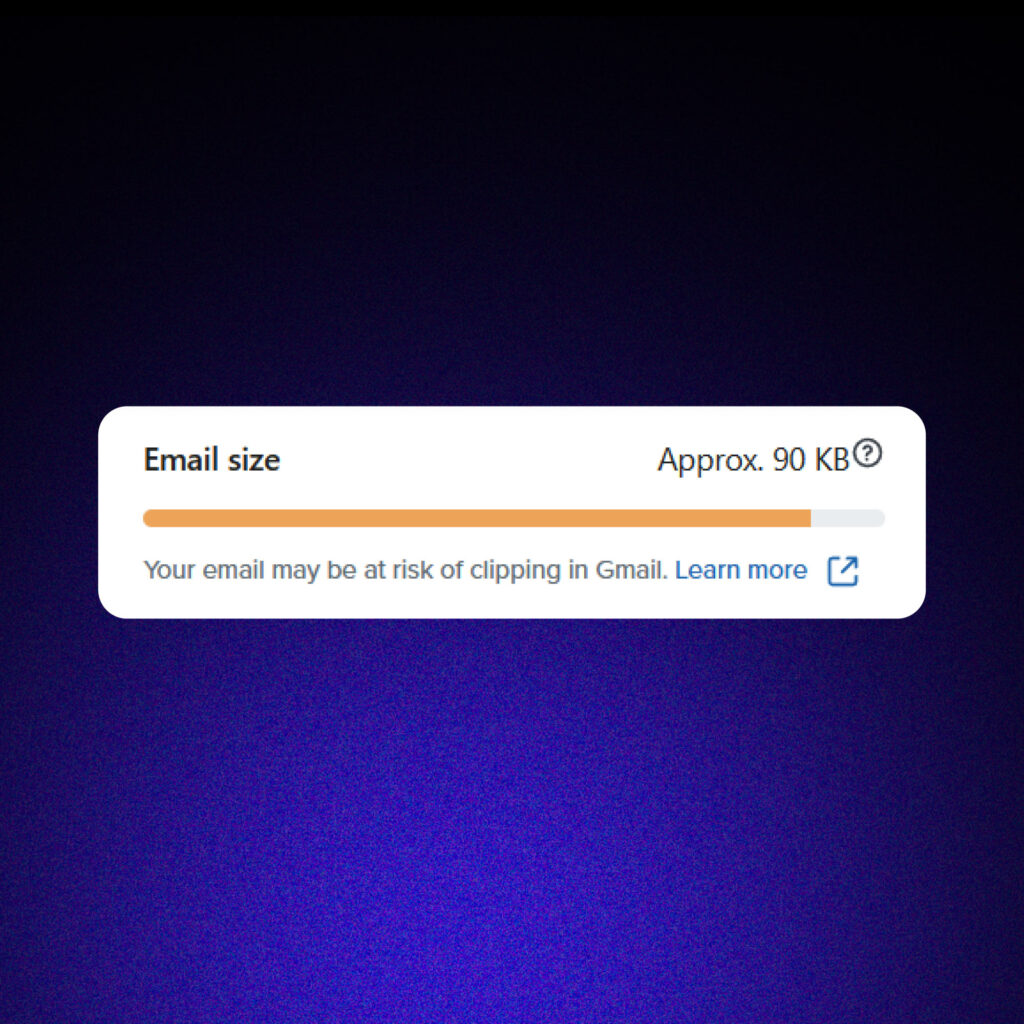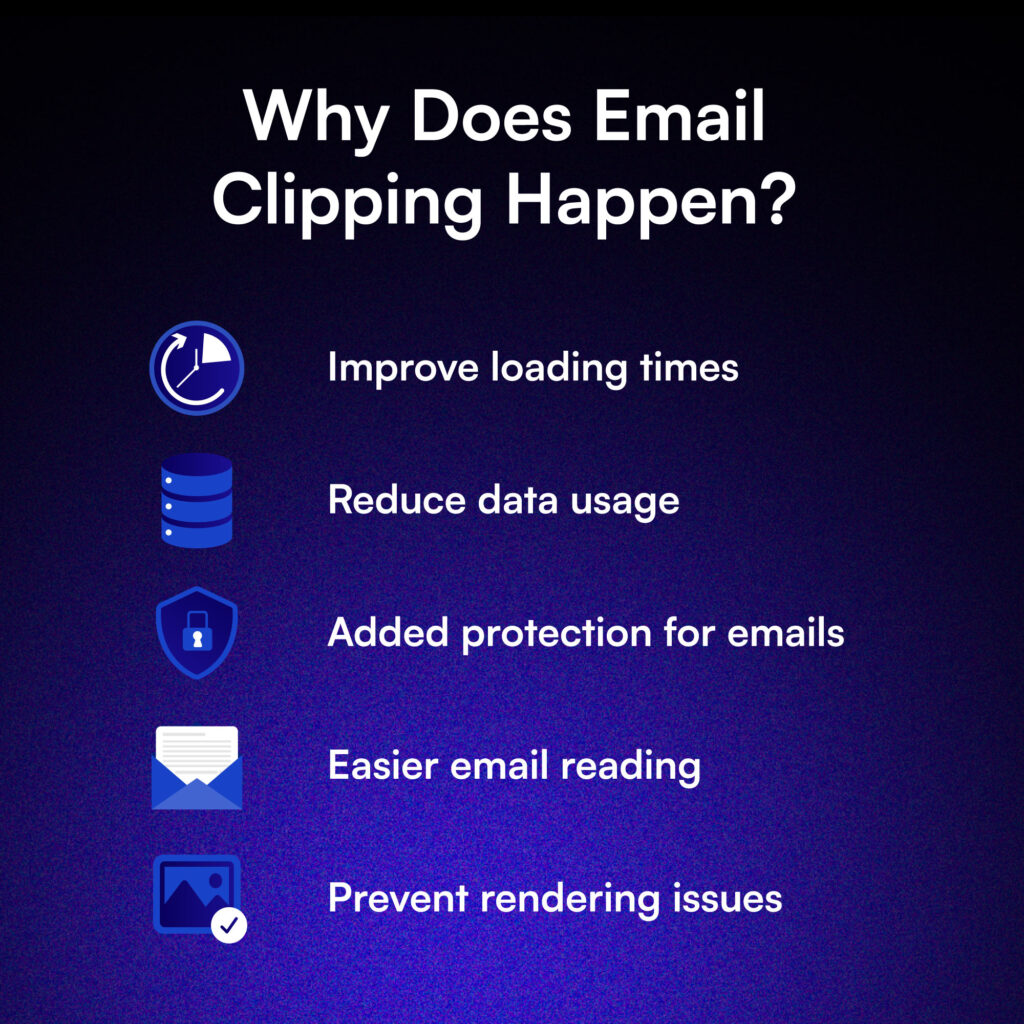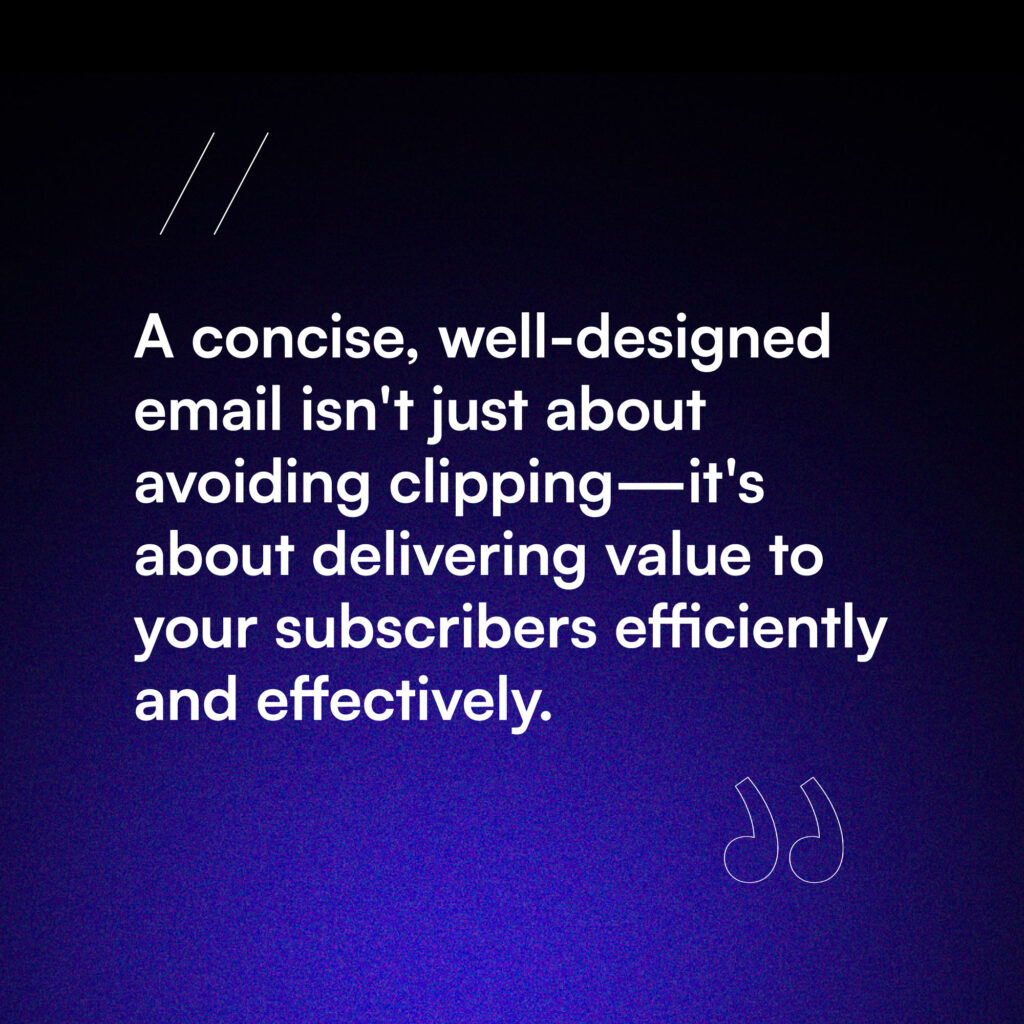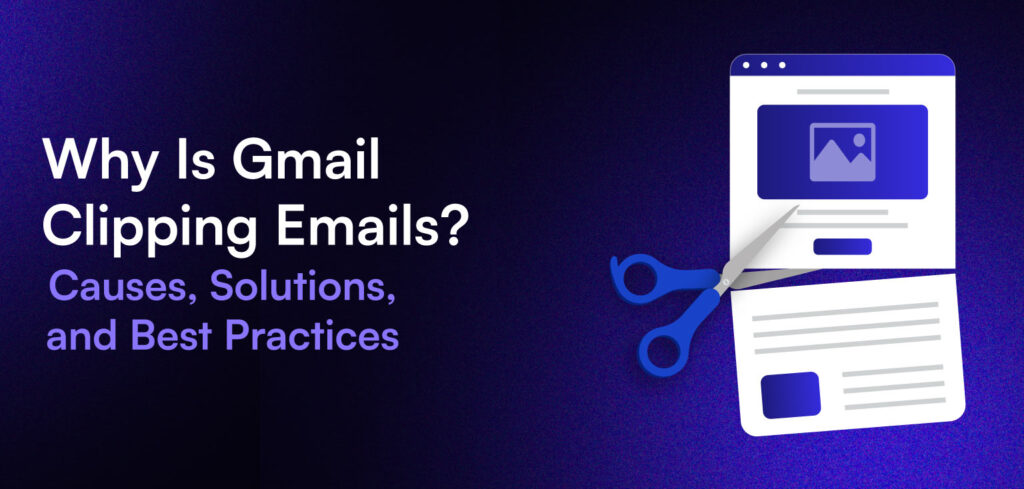Ever crafted the perfect email campaign, only to have it chopped in half like a forgotten sandwich? That, my friend, is the silent killer of email marketing – Gmail clipping.
Why is Gmail clipping emails? In this blog, we’ll be exploring what it is, why it happens, and most importantly, how you can prevent it.
Email clipping is a technical hurdle that lurks beneath the surface, silently sabotaging your open rates, click-through rates, and ultimately, your ROI. But fear not, for we’re here to shed light on this sneaky foe and equip you with the knowledge to conquer it.
Ready to clip-proof your campaigns and boost your email marketing success? Let’s get started!

What Is Email Clipping?
In email marketing, clipping occurs when an email client (such as Gmail, Apple Mail, or Yahoo) cuts an email that exceeds a certain size limit. The email is cut off, and a “View entire message” link is added at the bottom. This means that part of your email content remains hidden unless the recipient takes action to view the full message.
How to Identify Email Clipping
To determine if your email has been clipped, you can:
- Send a test email to yourself
- Check for the “View entire message” link at the bottom
- Use email testing tools provided by most Email Service Providers
Many ESPs, such as Klaviyo, offer built-in tools that warn users when they’re approaching the clipping threshold. Always pay attention to these warnings before sending your campaigns.

Why is Gmail Clipping Emails?
Email clipping isn’t just a random occurrence or a ploy to frustrate marketers. It serves several important purposes for email clients and their users. Let’s break down the main reasons why email clipping happens:
Improve loading times
We live in a high-speed era, thus, speed is king. Shorter emails load faster, providing a better user experience. This is especially crucial for mobile users, who make up a growing percentage of email recipients. Email clients aim to minimize the time between a user opening an email and seeing its content and reduce the risk of users abandoning the email due to slow loading.
Reduce data usage
By clipping emails, clients help conserve bandwidth, which is particularly important for users on limited data plans. This data-saving feature is especially beneficial in regions with slower internet connections or higher data costs. It also aligns with broader initiatives to reduce internet energy consumption and carbon footprint.
Protect users from potentially malicious content
Longer emails have more room for hidden malicious code or large attachments that could pose security risks. By clipping emails, clients can limit exposure to potential threats until the user chooses to view the entire message. This provides an additional layer of security, allowing spam filters and virus scanners more time to analyze the full content before it’s displayed.
Enhance Inbox Management
Clipped emails take up less space in the inbox, allowing users to see more email previews at once. This can help users manage their inboxes more efficiently, quickly identifying important messages without scrolling through lengthy content.
Prevent rendering issues
Extremely large or complex emails can sometimes cause rendering problems in certain email clients. By clipping emails, email clients ensure that at least part of the message displays correctly, even if the full version might have issues. This helps maintain a consistent user experience across different devices and platforms.

Understanding these reasons helps us appreciate why email clipping exists and informs our strategies for working within these constraints. By crafting our emails with these factors in mind, we can create messages that not only avoid clipping but also align with the user experience goals of major clients like Gmail.
While various email clients may clip messages, Gmail has become the benchmark for email clipping discussions. Here’s why:
- Market dominance: Gmail boasts over 1.8 billion active users as of 2022
- Clear clipping threshold: Gmail has a well-defined size limit of 102KB
- Industry influence: Gmail’s practices often set trends for other email clients
What Is the Impact of Email Clipping on Deliverability and Engagement?
Email clipping can significantly affect your email marketing performance:
- Reduced visibility of important content, including CTAs
- Lower engagement rates
- Skewed analytics due to hidden tracking pixels
- Potential deliverability issues from consistently sending oversized emails
3 Best Practices Prevent Email Clipping
To keep your emails from being clipped, consider these strategies:
Optimize Your Images
Image optimization is crucial in reducing email size. Compress your images without sacrificing quality to significantly decrease file size. Choose appropriate file formats: use JPEG for photographs and PNG for graphics with transparent backgrounds. Properly optimized images can make a significant difference in keeping your email within the size limits.
Be Concise
When it comes to email content, less is often more. Keep your copy focused and to-the-point, conveying your message clearly and concisely. While bullet points can aid in easy scanning, be mindful of their impact on file size.
Consider linking to additional information on your website instead of including it all in the email. This not only reduces email size but also drives traffic to your site.
Read this next: Dissecting the Design Principles of an Effective Email
Test Your Emails
Testing is crucial in preventing email clipping. Send test emails to various email clients, with a particular focus on Gmail due to its popularity and strict clipping threshold.
Utilize email testing tools to check how your email appears across different devices and clients. Make it a habit to monitor your email size throughout the design process, not just at the end. This allows you to make adjustments as you go, ensuring your final product stays under the clipping threshold.
What Is a Good Email Size to Aim For?
While email size limits can vary between email clients, aiming to keep your emails under 102KB (Gmail’s limit) is a good rule of thumb. This typically ensures your email will be delivered in full across most platforms.

Ready to Clip-Proof Your Emails?
Email clipping can be a significant hurdle in email marketing, but with the right strategies, it’s entirely avoidable. By understanding why clipping occurs, particularly in Gmail, and implementing the tips we’ve discussed, you can ensure your carefully crafted messages reach your audience in their entirety.
Remember, a concise, well-designed email isn’t just about avoiding clipping—it’s about delivering value to your subscribers efficiently and effectively.


